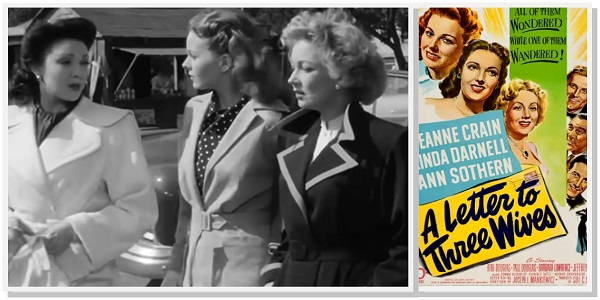Joseph L. Mankiewicz co-wrote (Vera Caspary and John Klempner) and directed the thoroughly entertaining drama A Letter to Three Wives that explored some key qualities and concerns shared by the three leading women characters. Interestingly, one important woman is missing despite initiating the thread that runs throughout the story.
The three titular wives in the movie are Deborah, Rita, and Lora (Jeanne Crain, Ann Sothern, and Linda Darnell – in that order) – who receive a letter from one mutually disliked Addie Ross telling them that she is going away and taking the husband of one of them with her. The message kicks off each wife’s suspicion that their husband is likely the one lost to the impending elopement. And viewers also to get to see key moments from each woman’s marital life in flashbacks.
A Letter to Three Wives is a representative woman’s film that was a popular genre in the ‘40s and ‘50s. The movie probes female psychology, focusing on their insecurities and emotional baggage in the context of their brought-up, aspirations, and individual attitudes. It’s a good character study through a compare-and-contrast lens set up for the audience. The story has some good humor, verbal and visual, drawn from the indispensable psychological vulnerabilities common to each protagonist character as well as shared by the trio.
What makes A Letter to Three Wives curiously interesting is the visual absence of Addie Ross. We only get to hear her voice (voiceover by Celeste Holm) and thus feel her presence without seeing her, otherwise achieved via the reactions of the three wives. This appears a smart choice as it keeps the viewers from making an opinion about her while accentuating the wives’ characters. Jeffrey Lynn, Paul Douglas, and Kirk Douglas play the three husbands, those poor husbands suspected of cheating on their wives. You do find out at the end which one was Addie Ross taking with her. Not revealed here to spare you the spoiler!




